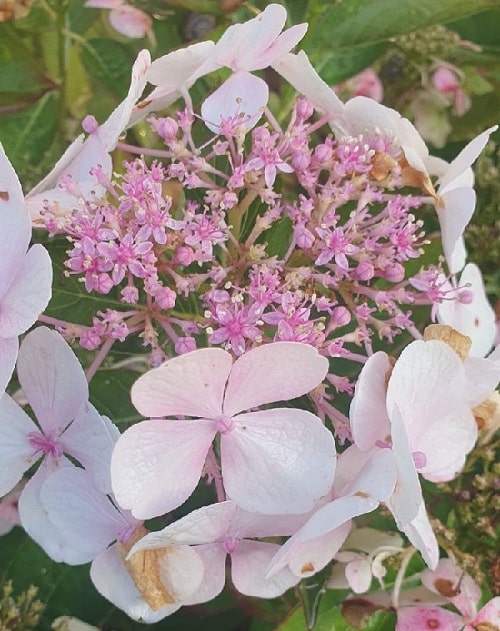A perfect flower, also known as a bisexual or hermaphroditic flower, possesses both male and female reproductive structures within the same flower. Here are three characteristics of a perfect flower:
- Presence of Both Stamens and Pistils: A perfect flower contains both male and female reproductive structures. The male reproductive structures are called stamens, and they consist of the anther, which produces pollen, and the filament. The female reproductive structures are called pistils, and they consist of the stigma (where pollen lands), the style, and the ovary (containing ovules, which develop into seeds after fertilization).
- Self-Pollination Potential: Because a perfect flower has both male and female parts, it has the potential to achieve self-pollination. Self-pollination occurs when pollen from the anther of the same flower lands on the stigma of the same flower, leading to fertilization. However, many perfect flowers have mechanisms to prevent self-pollination, promoting cross-pollination and genetic diversity.
- Complete Flower Structure: A perfect flower is also referred to as a complete flower because it has all four main floral parts: sepals, petals, stamens, and pistils. Sepals are the outermost leaf-like structures that protect the developing bud, while petals are often brightly colored and attract pollinators. The presence of all four floral parts is a characteristic of a complete flower.

In summary, a perfect flower is characterized by having both male (stamens) and female (pistils) reproductive structures within the same flower, the potential for self-pollination, and a complete set of floral parts.
The three most important rules for a healthy flower
Maintaining healthy flowers involves proper care and attention. Here are three important rules to follow for ensuring the health of your flowers:
- Proper Watering:
- Consistent Moisture: Flowers require consistent moisture, but not waterlogged soil. Overwatering can lead to root rot and other fungal diseases, while underwatering can cause stress and wilting.
- Watering Time: Water your flowers in the morning or evening when the temperatures are cooler. This reduces water loss through evaporation and allows the plants to absorb moisture effectively.
- Root Zone Watering: Water at the base of the plant, focusing on the root zone, rather than overhead watering. This helps prevent foliage diseases and ensures the roots receive the necessary moisture.
- Appropriate Light:
- Match Plant Needs: Different flowers have varying light requirements. Some prefer full sun, while others thrive in partial shade. Place your flowers in locations that match their specific light needs.
- Monitor Light Intensity: Ensure your flowers receive the right amount of light. Too little light can lead to weak growth and poor flowering, while too much direct sunlight can scorch leaves and stress the plant.
- Rotate Pots: If you have potted flowers, rotate the pots occasionally to ensure even exposure to light and prevent the plant from leaning towards the light source.
- Proper Soil and Fertilization:
- Well-Draining Soil: Use well-draining soil that provides adequate aeration and drainage. Soil that retains too much water can suffocate roots and lead to diseases.
- Fertilize Wisely: Feed your flowers with appropriate fertilizer according to their needs. Use a balanced fertilizer or one formulated for flowering plants to promote healthy growth and abundant blooms.
- Avoid Overfertilizing: Overfertilization can result in excessive foliage growth at the expense of flowers, and it can also lead to nutrient imbalances and soil salinity.
Remember that different flowers have unique requirements, so it’s important to research the specific needs of the plants you’re growing. Observing your flowers regularly, watching for signs of stress or disease, and adjusting your care routine accordingly will help ensure the health and longevity of your garden blooms. 3 important care rules for a good flower >>

